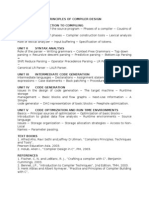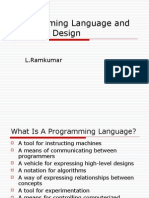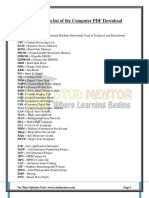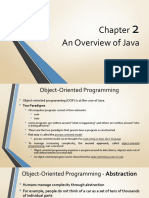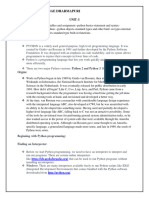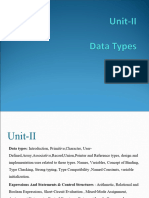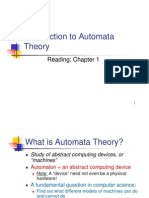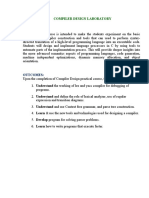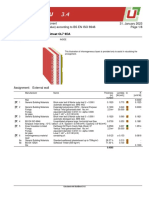0% found this document useful (0 votes)
180 views23 pagesCompiler - Introduction
The document discusses compilers and their structure. A compiler is a program that converts source code into machine-readable object code. It consists of a preprocessor, compiler, assembler, linker and loader. The compiler performs lexical analysis, syntax analysis, and semantic analysis on the source code. Lexical analysis tokenizes the code, syntax analysis generates a parse tree, and semantic analysis checks for errors and collects type information for code generation. Compilers allow programming in high-level languages and optimize code for computer architectures.
Uploaded by
Pandit Shikhar SharmaCopyright
© © All Rights Reserved
We take content rights seriously. If you suspect this is your content, claim it here.
Available Formats
Download as PDF, TXT or read online on Scribd
0% found this document useful (0 votes)
180 views23 pagesCompiler - Introduction
The document discusses compilers and their structure. A compiler is a program that converts source code into machine-readable object code. It consists of a preprocessor, compiler, assembler, linker and loader. The compiler performs lexical analysis, syntax analysis, and semantic analysis on the source code. Lexical analysis tokenizes the code, syntax analysis generates a parse tree, and semantic analysis checks for errors and collects type information for code generation. Compilers allow programming in high-level languages and optimize code for computer architectures.
Uploaded by
Pandit Shikhar SharmaCopyright
© © All Rights Reserved
We take content rights seriously. If you suspect this is your content, claim it here.
Available Formats
Download as PDF, TXT or read online on Scribd
/ 23
